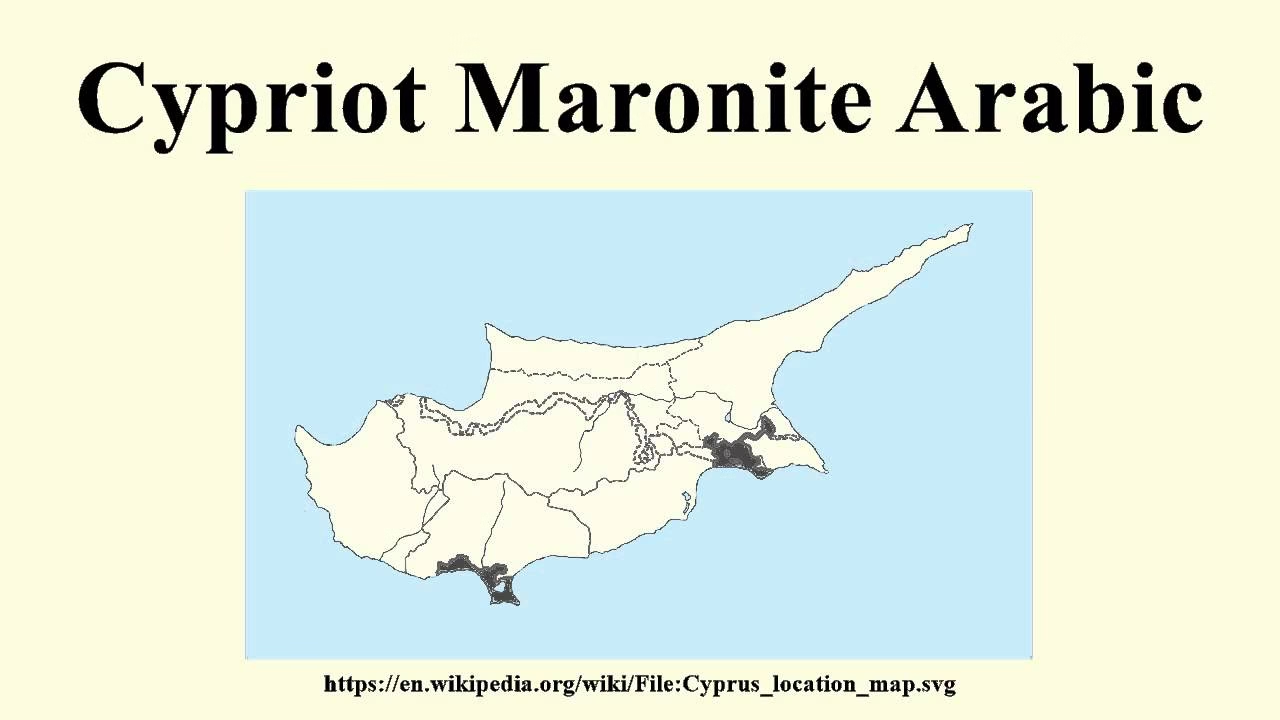2025
Cyprus
India
International
News
NICOSIA
Social
Aramaic Influence, Cultural Identity, Cypriot Maronite Arabic, Cyprus Culture, Endangered Languages, European Union Language Support, Heritage Revival, Language Preservation, Linguistic Diversity, Maronite Community, Minority Languages, Revitalization Efforts, Sanna Language, Syrian Arabic Roots, UNESCO Languages in Danger
Neharika Rowlo
0 Comments
Cypriot Maronite Arabic on the Brink: Community Pushes to Save Endangered Language With fewer than 1,000 speakers left, efforts intensify in Cyprus to revive a centuries-old linguistic tradition.
NICOSIA, Cyprus — A rare linguistic gem is fading in the eastern Mediterranean. Cypriot Maronite Arabic, known locally as Sanna, is one of the world’s most endangered languages, with an estimated 900 speakers remaining—most of them elderly. As modernity, migration, and assimilation reshape cultural identities, the Maronite community in Cyprus is racing against time to preserve its ancestral tongue.
The preservation of Sanna is not just about saving a means of communication; it is a fight to retain a distinct heritage rooted in centuries of religious migration, community cohesion, and cultural resilience.
Ancient Roots in a Changing Land
Sanna is a variety of Arabic with deep linguistic roots in Syrian Arabic, blended with elements of Aromatic—a language that was once widespread across the Near East and used in parts of the Bible. It was introduced to Cyprus by Arab Christian Maronites who migrated from the Levant, mainly modern-day Lebanon and Syria, between the 8th and 13th centuries.
The Maronites, followers of the Maronite Catholic Church, sought refuge in Cyprus primarily during periods of Islamic expansion and conflict in the Levant. They settled in a number of villages across the island, with the most notable being Kormakitis, in the northwestern part of Cyprus. There, Sanna evolved in relative isolation from other Arabic dialects, preserving archaic features and integrating words from Greek, Turkish, and Italian, owing to Cyprus’s colonial history and multicultural environment.
However, Sanna has never been recognized as an official language in Cyprus and was traditionally passed down orally. With no standardized script and little documentation, the language remained confined to informal settings—spoken at home and in church gatherings.
A Language at Risk
The turning point for the language came in the second half of the 20th century. The 1974 division of Cyprus, following a Turkish military intervention in response to a Greek-backed coup, displaced many Maronites from their traditional villages in the north to the south of the island. This demographic shift, along with increasing urbanization and intermarriage, led to a rapid decline in the use of Sanna.
Today, the majority of the remaining speakers are over the age of 60, and the language is rarely transmitted to younger generations. Children growing up in Maronite families typically speak Greek—the dominant language in southern Cyprus—and often English, which is widely used in education and business.
According to the UNESCO Atlas of the World’s Languages in Danger, Sanna is classified as “severely endangered.” Without urgent and sustained action, linguists warn that the language could vanish within a generation.
Revitalization Efforts: Schools, Textbooks, and EU Support
In response to this looming crisis, the Cypriot Maronite community, in collaboration with the Cypriot government and support from the European Union, has launched a comprehensive initiative to document and revitalize the language.
One of the key components is the introduction of Sanna in primary education, particularly in schools serving Maronite communities. Language classes have been established in Limassol and Nicosia, where many Maronites now reside. These courses are designed not just to teach vocabulary and grammar, but also to immerse students in the oral traditions, songs, and stories that form the cultural backbone of the language.
Additionally, linguists and educators are developing textbooks, dictionaries, and digital resources to aid both teaching and self-study. The creation of a standardized writing system using the Latin alphabet has helped modernize the language and make it more accessible to young learners.
Digital media also plays a growing role. Initiatives include audio recordings of native speakers, mobile language-learning apps, and YouTube channels showcasing traditional songs and dialogues in Sanna. These efforts not only reach younger generations but also engage members of the Maronite diaspora, many of whom live in the UK, Australia, and the United States.
The EU has recognized Sanna as a minority language under the European Charter for Regional or Minority Languages, which provides frameworks and funding for language preservation. This status has unlocked financial support for educational materials, cultural events, and linguistic research.
A Community’s Cultural Anchor
For the Maronite community, the loss of Sanna would signify more than the disappearance of words. It would mark the erosion of a unique cultural identity that has survived persecution, displacement, and assimilation pressures for over a millennium.
Sociolinguistic emphasize that language is a vessel of collective memory and worldview. In Sanna, Maronites encode religious rituals, family traditions, and historical narratives that do not exist in Greek or other dominant languages. Preserving the language is therefore also an act of cultural affirmation.
Community leaders and activists are organizing festivals, storytelling nights, and cultural heritage days centered around Sanna. These events aim to re-establish pride and emotional connection to the language, particularly among youth who may have grown up hearing it passively but never speaking it fluently.
Global Context: A Common Challenge
Cypriot Maronite Arabic’s struggle is not unique. Across the globe, over 40% of the world’s approximately 7,000 languages are at risk of extinction, according to UNESCO. Many of these languages are spoken by indigenous or minority communities whose traditional lifestyles are being disrupted by globalization, conflict, and shifting social norms.
Revitalization is often a difficult and slow process. It requires not only resources and institutional support but also the willingness of communities to embrace their heritage in everyday life. Successful language revival efforts, such as the cases of Welsh in Wales, Māori in New Zealand, and Hebrew in Israel, offer valuable lessons in mobilizing political will, educational reform, and community engagement.
Cyprus’s attempt to preserve Sanna reflects a growing global awareness of the importance of linguistic diversity as part of humanity’s shared heritage. The language carries not only linguistic significance but also archaeological, religious, and historical value, as it retains echoes of the Levantine Christian experience through centuries of upheaval.
Looking Ahead
The fate of Sanna remains uncertain, but the renewed attention and investment in its revival offer a glimmer of hope. A new generation of Cypriot Maronites is now encountering the language in classrooms, on screens, and at community gatherings—spaces where it once had all but disappeared.
Experts agree that the survival of Sanna will depend on sustained intergenerational transmission and integration into daily communication. Language learners must move beyond academic understanding to real-world use—speaking it at home, using it in media, and embracing it in public life.
The road to revitalization is long and filled with challenges, but for the Maronite community in Cyprus, each step brings them closer to preserving a crucial part of who they are.
In the words of a local cultural coordinator, “When we speak Sanna, we speak not only to each other, but to our ancestors.”
Discover more from The Talkative Indian
Subscribe to get the latest posts sent to your email.















Leave a Reply